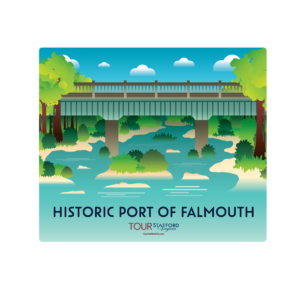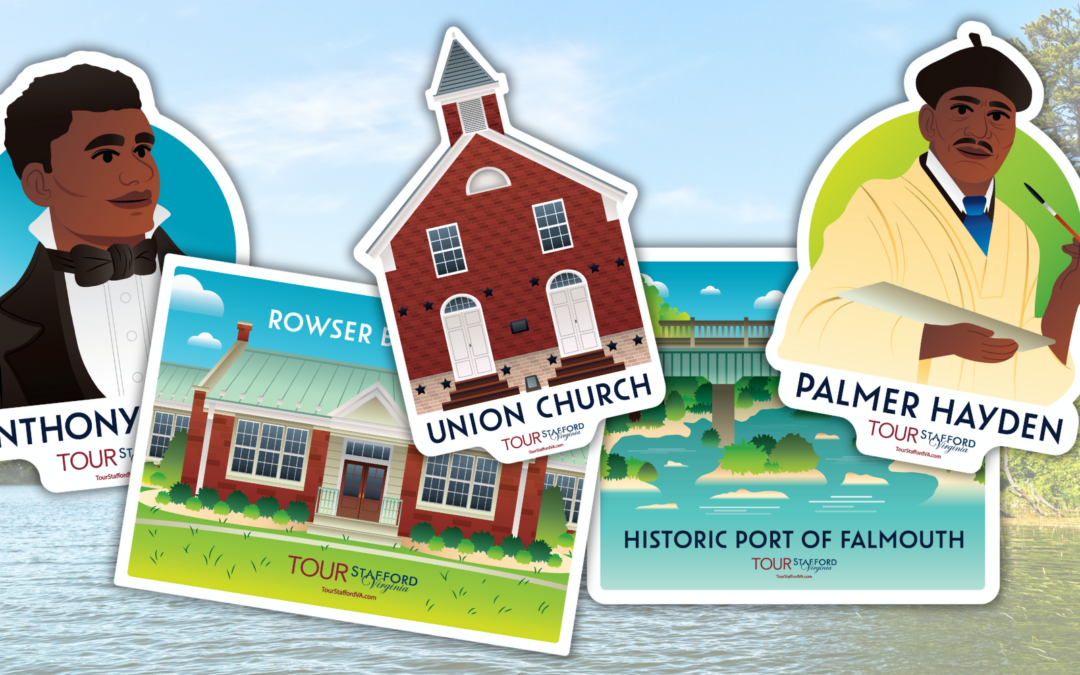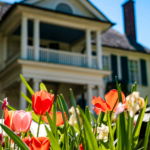Stafford County, Virginia boasts a rich tapestry of Black history that has significantly contributed to the region’s cultural legacy. We are excited to release our Black History sticker collection this month representing the rich Black History of Stafford County.

Palmer Hayden: An Artistic Trailblazer
Palmer Hayden, born in Widewater, Stafford County, in 1890, went on to become a prominent African American artist during the Harlem Renaissance. Known for his vibrant and expressive paintings, Hayden’s work captured the spirit of the times and reflected the resilience of the Black community. Despite facing adversity, Hayden’s art continues to inspire and is a testament to the enduring strength of the Black cultural identity.

Historic Port of Falmouth: Gateway to Freedom
The Historic Port of Falmouth played a crucial role in the history of the Underground Railroad. Falmouth served as a gateway to freedom for enslaved individuals seeking refuge in the North. The port’s significance in facilitating escapes and connecting with abolitionist networks highlights the bravery and determination of those who sought liberty against all odds.

Anthony Burns: A Fight for Freedom
Anthony Burns, a fugitive slave, made history in Stafford County when he faced a high-profile legal battle under the Fugitive Slave Act of 1850. The case attracted national attention and ignited fervent debates on the morality of slavery. Burns’ courageous pursuit of freedom became a symbol of resistance and further fueled the abolitionist movement.

Union Church: A Beacon of Community
Union Church, established in the late 19th century, served as a focal point for the Black community in Stafford County. With its roots deeply embedded in faith and community, the church became a center for spiritual, social, and educational activities. Union Church symbolizes the strength of unity and resilience within the Black community during challenging times.

The Rowser Building: Preserving Legacy and Progress
The Rowser Building, a historic landmark in Stafford County, stands as a testament to the Black community’s dedication to education and progress. Originally housing the first high school for African American students in the area, the building has witnessed the evolution of education for Black youth. Today, it stands as a symbol of resilience and progress, preserving the legacy of those who paved the way for future generations.
Stafford County’s Black history is a narrative of strength, resilience, and progress. From the artistic contributions of Palmer Hayden to the pivotal role of the Historic Port of Falmouth in the Underground Railroad, each aspect of this history has left an indelible mark on the cultural landscape. As we reflect on the stories of Anthony Burns, Union Church, and The Rowser Building, we recognize the enduring spirit of a community that has played a vital role in shaping the history of Stafford County, Virginia.






